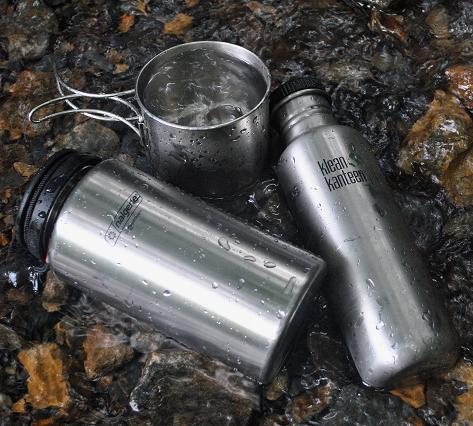
Southeast Wilderness Survival
aaaaa

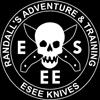



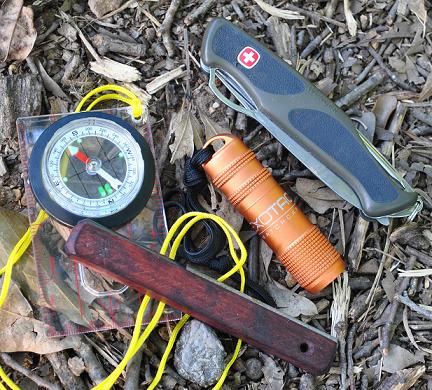
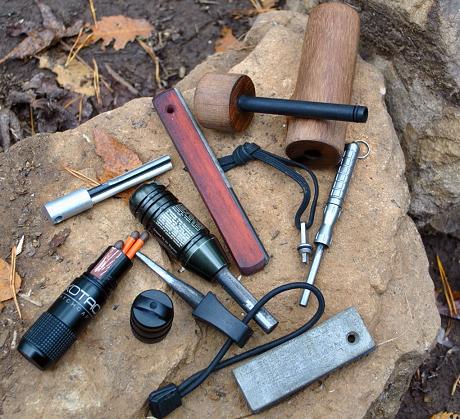
You don't have to carry enough tools for an expedition every time you want to go for a hiking trip, over-tooling can add so much weight to your load that it takes away from the enjoyment of the trip. However there are certain tools that I feel one should have handy in a wilderness environment just to cover basic needs and some contingencies. In survival circles you'll often hear minimal tooling referred to as "The Basic-3". which consists of a cutting tool, a compass, and a way to make fire. This covers the most basic of human needs in a short term survival situation. The ability to make simple short term shelters, the ability to make fire for warmth, water purification, or signaling, and the ability to navigate your way to safety.
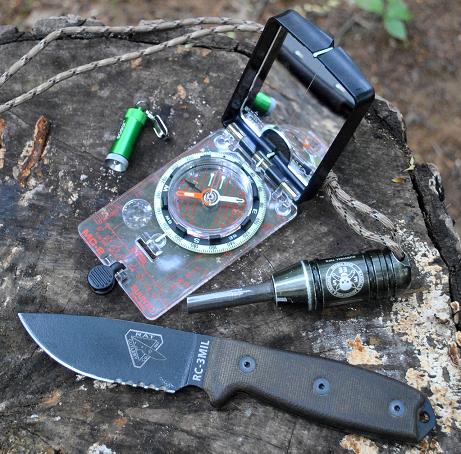
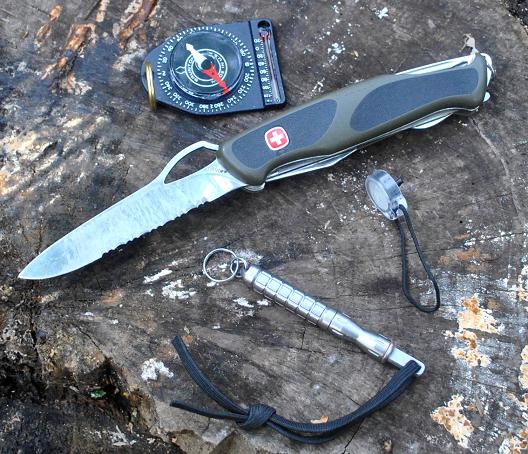

Here in the ridges of southeast Tennessee I like to expand that and have a basic-5 kit, which always contains the above mentioned items as well as some form of light and a walking stick. The terrain I spend the most time in, a deciduous temperate rain forest, can be very treacherous at night. What may appear in the din light to be solid ground can be nothing more than the fallen little of limbs and leaves over a chasm between large rocks. More than one person has fallen to severe injury, and worse, in this situation I never head out without at least packing along a knife, a small light, a more accurate and multi-purpose sighting compass. The mirror on the sighting compasses will serve as a great signal mirror if needs be as well as being helpful for removing foreign objects from my eyes.
A well made cutting tool is always high up on my personal gear check list. In the process of learning how to fashion tools in the wilderness using only the available natural resources and stone cutting tools I also learned that I would always endeavor to have a good sharpened piece of steel on my person in the bush because the steel is much more durable than stone. Today there are many styles available to better suit individual needs. Many prefer the lighter approach to multi-function and opt to carry only a slipjoint folder such as a Swiss Army Knife, or multi-tool, and most of the time that will be all that is needed. Personally I carry a SAK myself as part of my kit teamed with a heavier fixed blade. I happen to be very fond of the saw on the Swiss Army Knife. However, here in my area, if I were forced to choose between the two I'd personally prefer a heavier fixed blade due to its better durability. This added strength is particularly helpful in the physical abuse and lateral stresses that are often required to start fires under extreme conditions. A good knife can be used to fashion many other tools and utensils in a wilderness if needs be
In the bush the ability to light up the dark places is important for more than one reason. First and foremost there is the safety factor of being able to see where you are stepping and avoid serious injury in treacherous terrain. Secondly there is the ability to see the extent of, and how to treat, any wounds that may have be sustained. Third, at night a bright light can be a very a very effective signaling device and can attract attention from long distances. Last, but by no means least, a light in the darkness is a morale booster which will help maintain a positive mental attitude. PMA is very important in the wilderness. Nights under the forest canopy can very very dark, this can become quite foreboding if you are already in distress in foreign terrain.
The ability to make fire at will is very important in a wilderness environment, and is so for several reasons. Fire will give you warmth in the cold, the ability to cooking, light in the darkness, purify your water, signal for help, offers a rudimentary form of defense, and the ability to sterilize cutting instruments. All of these are all possible through simply being able to produce flames at need. Personally I always like to have at least one flame based fire starting method, and one spark based fire starting method on my person (not in my pack) any time I am traveling through the bush. Today lighters and ferrocerium fire starters are both available in all shapes and sizes to suit individual needs and desires.
When traveling through unfamiliar terrain having a good reliable compass along is a must for keeping yourself oriented. They can be very helpful even in terrain you are familiar with because the appearance of the terrain can change drastically between day and night. Any compass will tell you the general directions and any working compass, even a button compass, is always better than no compass at all. I prefer sighting compasses because of the mirror that works for multiple purposes.
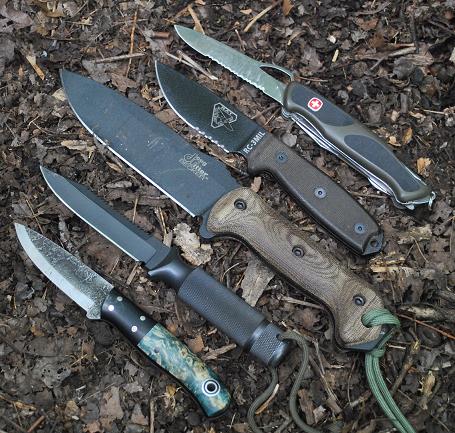
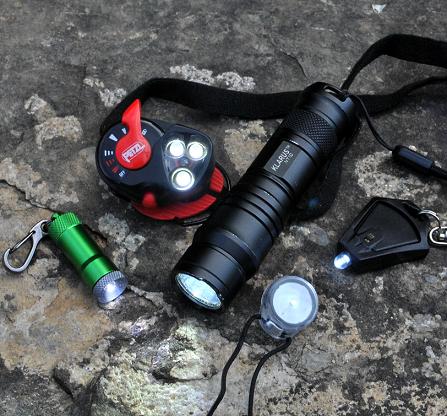
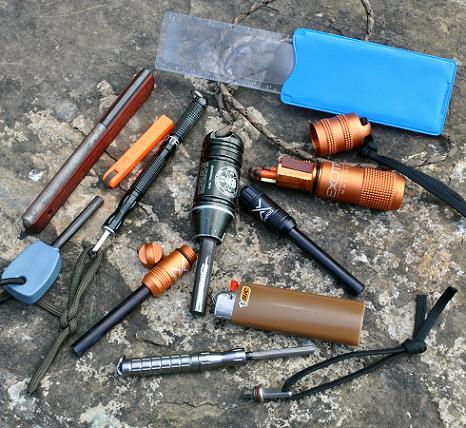
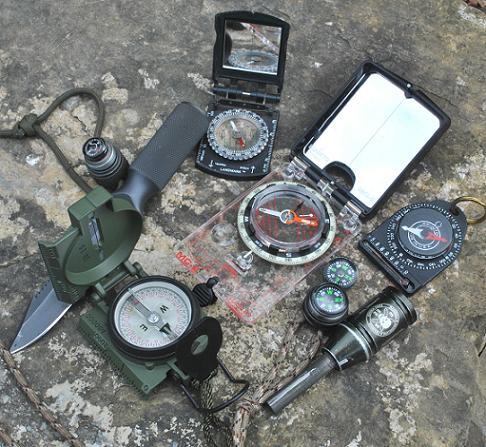
It is a good idea to have a couple of different ways to signal for help should you become lost or injured. The most common signaling devices are lights, mirrors, and whistles, but in more remote areas the ability to start a bright or smoky fire can be another way of catching attention
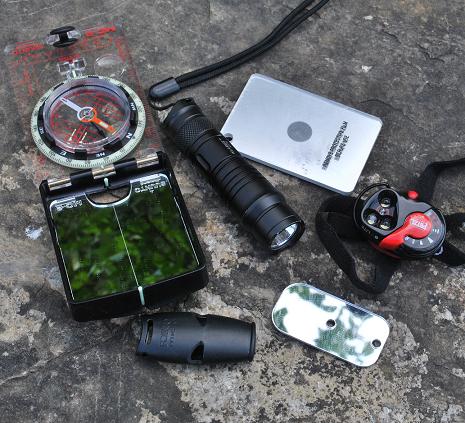
You may not think of a water bottle as a tool, but they are still very important because even the earliest stages of dehydration is can be dangerous. Prolonged dehydration will effect your ability to think clearly, damage internal organs, and in a short time (three days) it will even threaten your life.
